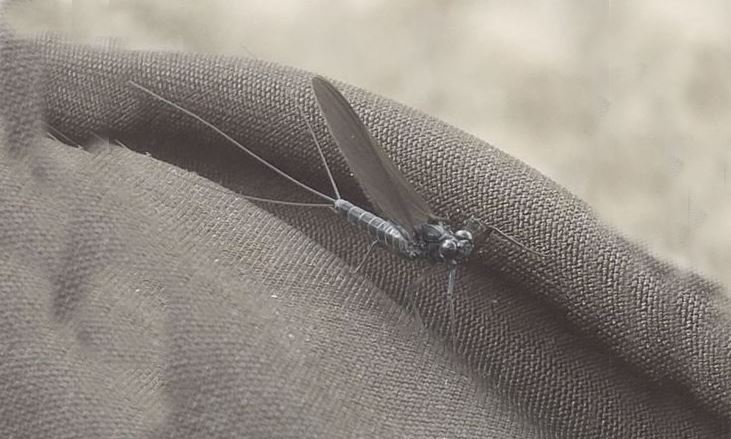The body of the insect is reddish-brown, with pale orange compound eyes. In dorsal view, the upper portion of the eyes is oval, with the major axis nearly perpendicular to the longitudinal body axis, and the distance between compound eyes is less than half the width of the eye. The lateral ocelli are closely located to the eyes but are not contiguous. The thorax is reddish dark brown. The forewings display a clear, dark transverse band at the base. The hindwings are much smaller than the forewings, featuring conspicuous color markings at the base. The costal projection is bluntly rounded, and the apex of the projection is situated at approximately 0.6 to 0.7 the distance from the base to the apex of the wings. The apex of the wings is blunt, with slightly expanded apical and posterior areas. Regarding the legs, the fore tarsus is slightly longer than the tibia, and both are much longer than the femur. The fore femur and the apex portion of the fore tibiae are reddish-brown, while other parts of the forelegs are pale. The mid- and hindlegs are pale, except for the hind femora, which have a large brown subapical band. The claws are dissimilar, with one being blunt and pad-like, and the other being apically hooked, narrowing abruptly at the apex. Each tergum of the abdomen has one pair of straight dark stripes at the middle dorsally, with those on terga 1–6 being clearer than on others. Tergum 10 has a truncated apex. The caudal filaments are pale apically with reddish basal articulations. In terms of genitalia, the styliger plate has a slightly convex posterior margin. The forceps segment 1 narrows gradually from the base to the apex, with the apical one-third curved mesally. The length of segment 1 is approximately 6.0 times the length of segment 2, and the length of segment 3 is about 0.8 times the length of segment 2. The basal portion of the forceps is pale, while most parts of segment 1 are dark brown, and the apical segment of the forceps is small. The penes are straight and narrow, with straight inner margins and outer margins converging apically. Short spine-like setae are present along the outer margin dorsally.
